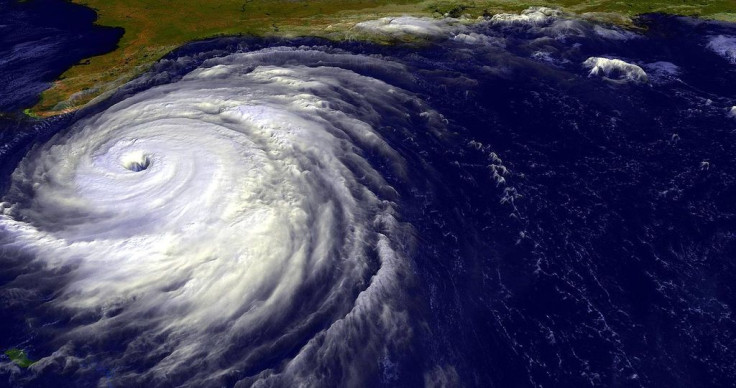Hurricanes May Become More Frequent And Intense Around The World, According To New Climate Model

Close to 90 tropical cyclones and storms occur each year. While the relationship between climate change and cyclone or hurricane activity is not quite understood, the use of climate models has helped uncover much about hurricane patterns to come.
In a new study, researchers used six Coupled Model Intercomparison Project 5 (CMIP5) global climate models, based on climate data from 1950 to 2005, to find out more about what other changes the global climate will endure and how this will affect the frequency of hurricanes.
Previous work has indicated that increases in the greenhouse gas content of the atmosphere increases the heat in the air, or enthalpy, and thus causes intense tropical cyclones. The stability of heat in the atmosphere is often kept constant by the evaporation of oceans and rainfall. This keeps the atmosphere's water content the same, and therefore its variances at equilibrium. However, when greenhouse gases, like carbon dioxide, enter the atmosphere, they make it warmer and less likely to cause low-level evaporation of bodies of water. As a result, the lack of equilibrium, as well as the higher heat in the atmosphere, creates cyclones.
As the planet warms, a 1979 study indicates that cyclone frequency and intensity will worsen as time passes.
The CMIP5 employed direct simulations of cyclones, downscaling these simulations to be representative of what happens during hurricanes and measuring environmental factors that allow for hurricanes and cyclones to develop. The researchers found a decrease in the frequency of weaker weather events, like rain fall, but an increase in high intensity cyclones, with much concurrent rain fall.
Cyclones often develop into hurricanes, as they are weaker versions of hurricanes. Cyclones are also usually the starting point for the development of a hurricane.
When the researchers ran the simulation for spans of time — representative of decades — the 21st century was noted to experience a total increase in the range of 10 to 40 percent. The data showed that 105 storms are predicted to occur each year by the year 2095.
Not only will the frequency of dangerous storms increase, but so will their intensity and ability to cause serious damage. The Saffir-Simpson Hurricane Wind Scale measures how intense a storm is by its wind speed. This is measured off into categories, where category 1, as explained by the National Weather Service's National Hurricane Center, indicates "very dangerous winds will produce some damage" and the highest category 5 indicates that "catastrophic damage will occur." Categories 3 through 5 are considered major storm designations. The researchers also found a 40 percent increase in the occurrence of hurricanes of Saffir-Simpson category 3 and higher.
The power of a storm is understood as its ability to cause damage from wind speed after the storm leaves the water and reaches land. Hurricanes are known to be most powerful over water, and often start out as waves, warming temperatures and wind and then evolving into cyclones and hurricanes. When a hurricane makes landfall, it will lose much of its power, though if a hurricane is extremely powerful over water, it will still be powerful after landfall. The researchers estimate that the power lost at landfall will increase by about 55 percent, alongside the 21st century's increase in storm intensity and frequency. So while the storms are estimated to lose much of their power, they will still have 45 percent of that power — an alarming amount.
While all of this data is based on previous weather patterns and simulations, it should not be discounted. Given extended damage caused by storms in the past ten years, thanks to devastating storms like hurricanes Sandy and Katrina, this information should be taken seriously by all.
Source: Emanuel KA. Downscaling CMIP5 climate models shows increased tropical cyclone activity over the 21st century. PNAS. 2013.
Published by Medicaldaily.com



























